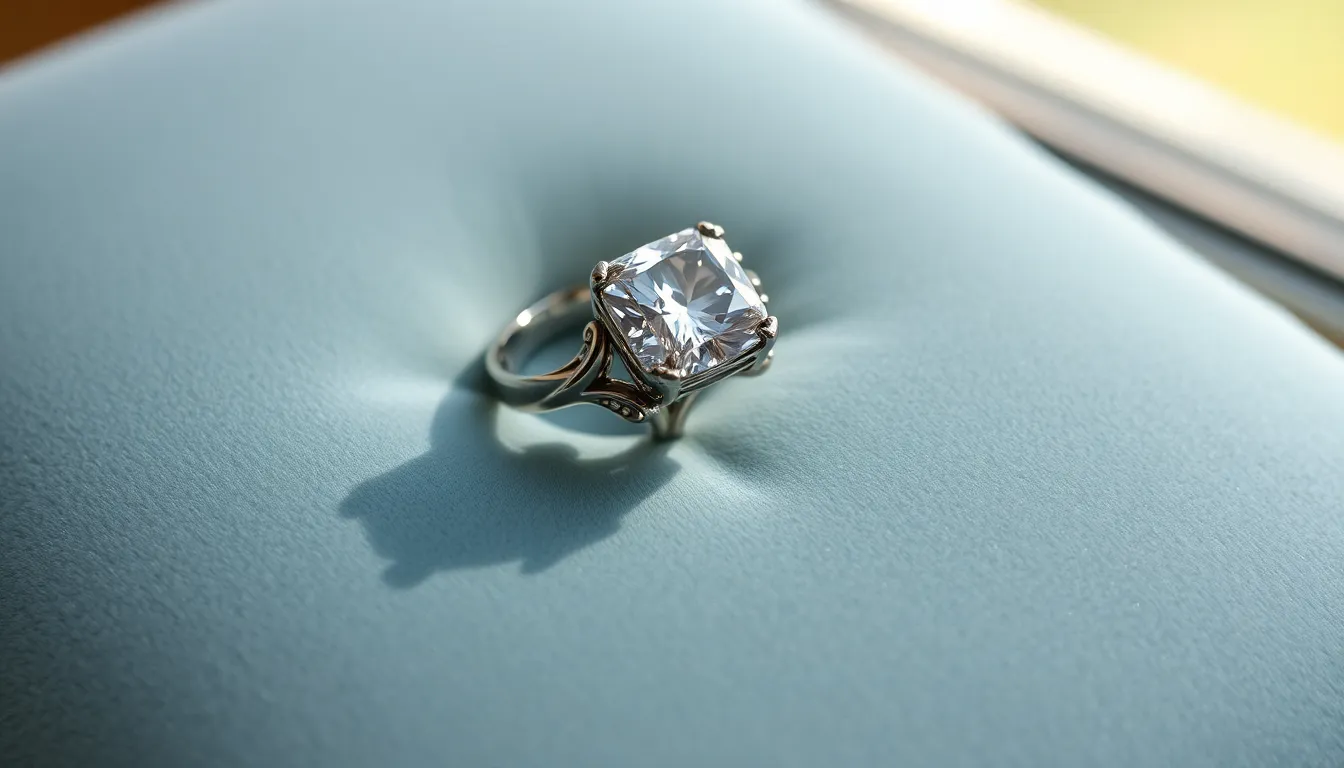When it comes to finding the perfect ring size, precision is key. Many people may not realize that ring sizes can vary significantly between different measurement systems. For those accustomed to inches, converting 2.5 inches to millimeters can be the first step in ensuring a comfortable fit.
Understanding this conversion not only simplifies the shopping experience but also helps avoid the disappointment of receiving a ring that doesn’t fit. With a little knowledge about how to make the conversion, anyone can confidently navigate the world of jewelry sizing. Let’s dive into the specifics of converting 2.5 inches to mm and discover how it impacts ring size selection.
Table of Contents
ToggleUnderstanding Ring Sizes
Accurate determination of ring sizes enhances the shopping experience. Knowing how to interpret measurements in inches and millimeters is crucial for obtaining the perfect fit.
What Does 2.5 Inches Mean?
A measurement of 2.5 inches corresponds to the inner circumference of the ring. This measurement reflects the distance around the inside of the ring, providing a basis for sizing. The conversion from inches to millimeters helps understand how this measurement fits into various sizing systems used globally.
Conversion of Inches to Millimeters
Converting inches to millimeters involves a simple mathematical formula. One inch equals 25.4 millimeters. To convert 2.5 inches to millimeters, multiply by 25.4:
[
text{2.5 inches} times 25.4 = 63.5 text{ mm}
]
This means a ring with a circumference of 2.5 inches has an inner diameter measuring 63.5 mm. Knowing this conversion enables individuals to shop confidently, ensuring they select rings that fit as intended.
Importance of Accurate Ring Sizing

Accurate ring sizing is crucial for both comfort and aesthetics. Properly sized rings enhance the overall wearing experience and ensure longevity in jewelry use.
How Ring Size Affects Comfort
Comfort hinges on ring size. A correctly sized ring allows for seamless movement without pinching or slipping. Rings that are too tight create discomfort, limiting blood flow and causing irritation. Conversely, rings that are too loose risk falling off, leading to potential loss. For instance, a ring size that fits snugly yet comfortably around the finger allows for daily activities without hindrance.
The Impact on Jewelry Design
Jewelry design greatly relies on accurate sizing. Designers create specifications based on standard measurements. When sizes deviate, it can distort the design’s intended aesthetic and function. For example, a beautifully crafted ring sized inaccurately may not showcase the stone’s brilliance or align as intended with other design elements. Thus, precise ring measurements ensure that artistic visions translate effectively into jewelry that meets both form and function.
Converting 2.5 Inches to mm Ring Size
Converting 2.5 inches to millimeters is essential for accurate ring sizing. This measurement reflects the inner circumference, impacting fit and design.
The Calculation Process
The calculation for converting inches to millimeters relies on a straightforward formula. Multiply the inch measurement by 25.4. For instance, using 2.5 inches, the equation becomes:
[
2.5 text{ inches} times 25.4 = 63.5 text{ mm}
]
Thus, a ring with an inner circumference of 2.5 inches equals 63.5 mm.
Common Conversion Equivalents
Understanding common conversion equivalents aids in ring size selection:
| Inches | Millimeters |
|---|---|
| 1 | 25.4 |
| 2 | 50.8 |
| 2.5 | 63.5 |
| 3 | 76.2 |
| 4 | 101.6 |
Reviewing this table allows individuals to quickly reference the relationship between inches and millimeters for various ring sizes.
Practical Guide for Measuring Ring Size
Accurate ring size measurement enhances comfort and style. Use specific tools and simple steps for effective measurement.
Tools You Can Use
- Ring Sizer: A flexible tool designed to measure the size of a ring directly. It provides an accurate fit by sliding it on the finger.
- Measuring Tape: A soft, flexible tape can wrap around the finger for a direct measurement. Ensure it’s snug but not tight.
- Printable Ring Size Chart: Downloadable templates aid in measuring the finger’s circumference against standard sizes.
- String or Paper Strip: Use a thin string or paper strip wrapped around the finger. Mark the point where it overlaps and measure the length with a ruler.
- Jewelry Stores: Professional jewelers can provide precise measurements using specialized tools.
Step-by-Step Measurement Process
- Gather Materials: Obtain a ring sizer, measuring tape, or string.
- Choose the Right Time: Measure at the end of the day when fingers are warm and slightly swollen for the most accurate reading.
- Wrap the Tool: Use the measuring tape or string, wrapping it around the base of the intended finger.
- Mark the Size: If using string, mark where it overlaps. If using a measuring tape, take the measurement directly.
- Compare Measurements: If using string, measure its length against a ruler in millimeters. If using a ring sizer, note the corresponding size.
- Repeat for Accuracy: Measure 2-3 times to ensure consistency, as slight variations may occur.
Following these steps ensures an accurate measurement, enhancing the overall experience of purchasing a ring.
Accurate ring sizing is essential for both comfort and style. Understanding the conversion from 2.5 inches to 63.5 mm empowers individuals to select the perfect ring size, avoiding discomfort and ensuring a proper fit. This knowledge not only enhances the wearing experience but also preserves the integrity of the jewelry design. By following the measurement guidelines provided, anyone can confidently determine their ring size and enjoy the aesthetic and functional benefits of well-fitted jewelry. Taking the time to measure correctly is a small investment that pays off in both comfort and elegance.









